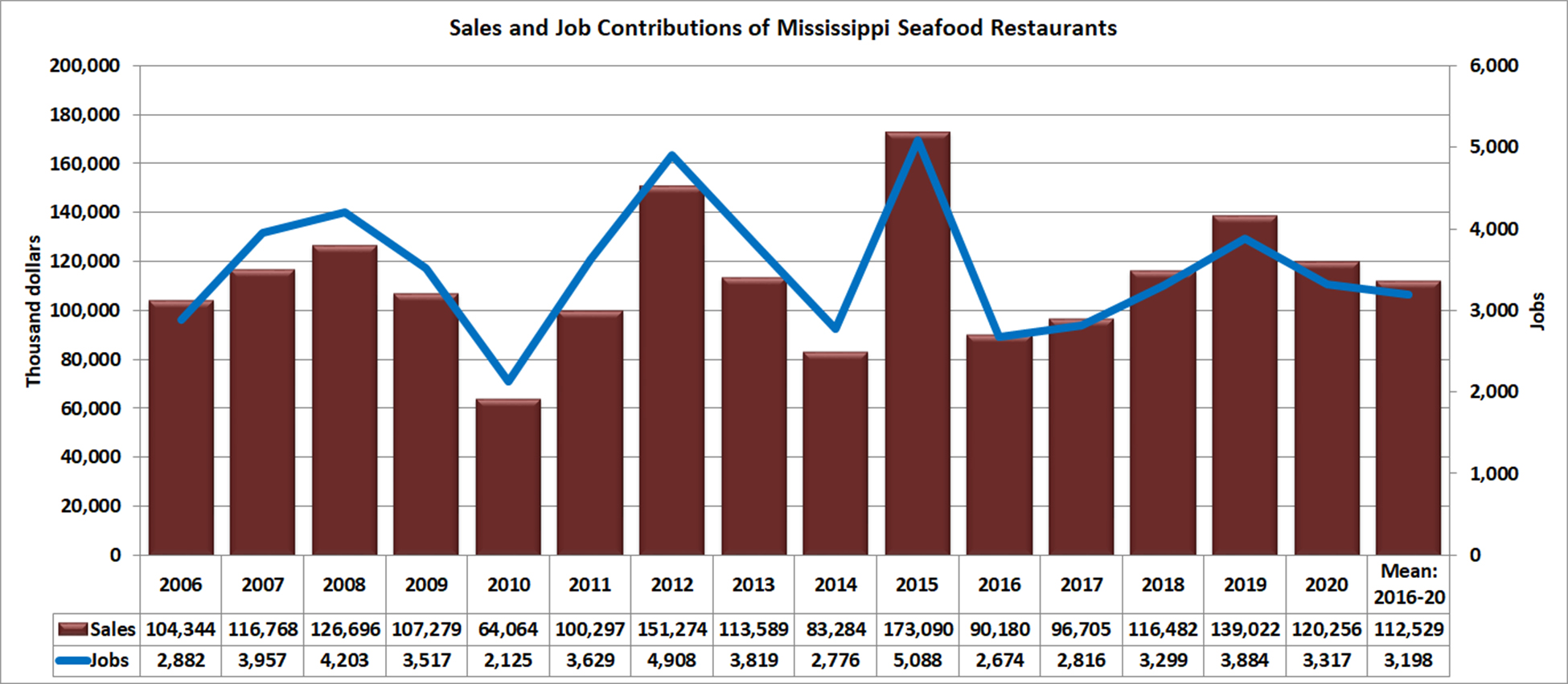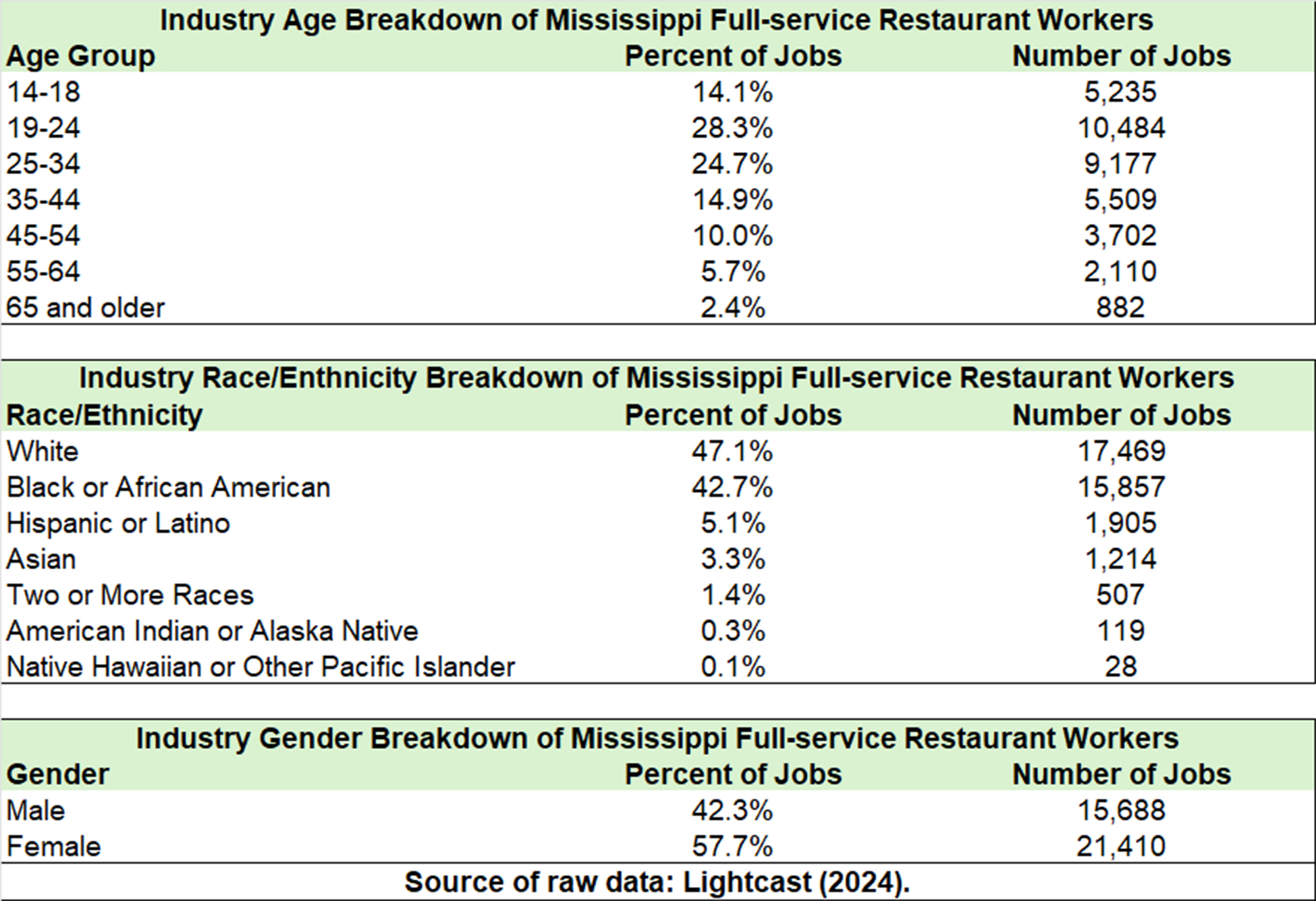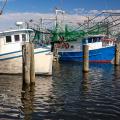Mississippi Seafood Restaurants
Seafood restaurants include the retail trade of seafood products by eating and drinking places.
An online list of Mississippi seafood restaurants is posted on the Mississippi Department of Marine Resources website. Restaurants are listed by region and city.
An online directory of registered restaurants is available on the Mississippi MarketMaker website. An online list of restaurants is shown when you type “restaurants” in the search box.
A survey of Mississippi seafood restaurants showed that the leading fish species bought was catfish, followed by tilapia, salmon, tuna, and snapper. The second group of fish species purchased by participating seafood restaurants included mahi-mahi, grouper, cobia, red drum, and sea trout. The third cluster of fish species served by the seafood restaurants that participated in the survey included pollock, black drum, cod, mullet, and haddock.
Shrimp was the top shellfish species purchased by the participating establishments, trailed by oysters, crawfish, scallops, and blue crabs. The second cluster of shellfish species purchased by participating seafood restaurants included snow crab, lobsters, squid, mussels, and clams. The third bundle of shellfish species served by the seafood restaurants that participated in the survey included Dungeness crab, king crab, octopus, and roe.
Sales and Job Contributions
Sales are the gross sales by businesses within the economic region affected by an activity. The total sales contribution consists of direct, indirect, and induced sales. Mississippi seafood restaurants have generated more than $112 million in sales contribution per year since 2016 (Fig. 1).
Job contributions are projected as a mix of both full-time and part-time jobs. The total job contribution is the sum of direct, indirect, and induced jobs. Mississippi seafood restaurants have created more than 3,100 jobs yearly since 2016 (Fig. 1).
The average productivity of Mississippi restaurant industry workers can be measured by dividing sales contribution by job contribution. The average productivity of Mississippi seafood restaurant workers during the past five years was $35,000.

Demographic Characteristics
The demographic characteristics of Mississippi full-service restaurant jobs are shown below. Most of the workers are between 19 and 34 years old. The racial breakdown of workers is primarily White and African American. Most of the workers are females.

Publications
News
RAYMOND, Miss. -- For Mississippi’s commercial fishermen, stress is part of daily life, but the typical stressors they face have been intensifying for more than 10 years.
LAPLACE, La.
While the U.S. Army Corps of Engineers is closing the Bonnet Carré Spillway this week, economic impacts of its months-long opening are expected to be felt in the seafood industry for years to come.




